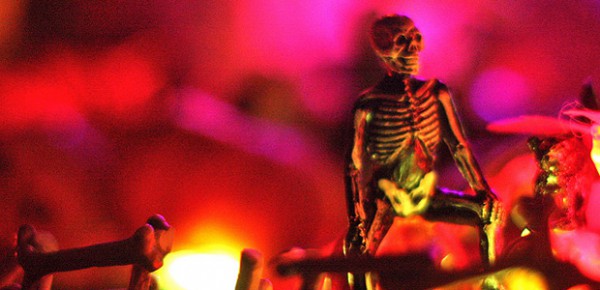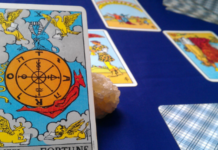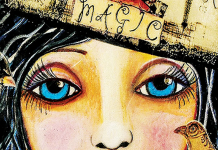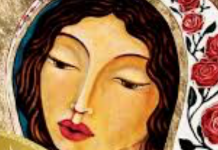 What comes to mind when you hear the word necromancy? Do you think of ghoulishly gruesome grave robbing under the light of the full moon? Do you picture only sinister sorts enslaving the deceased and making them do their bidding? Well if so, then you only know of the sordid past of the ancient practice known as necromancy. But what of this arcane art in these modern times? Do people still revere and utilize the death current in occult operations? They most certainly do. While necromancy does indeed have roots in many ancient cultures, this sector of the occult sciences is far from dead.
What comes to mind when you hear the word necromancy? Do you think of ghoulishly gruesome grave robbing under the light of the full moon? Do you picture only sinister sorts enslaving the deceased and making them do their bidding? Well if so, then you only know of the sordid past of the ancient practice known as necromancy. But what of this arcane art in these modern times? Do people still revere and utilize the death current in occult operations? They most certainly do. While necromancy does indeed have roots in many ancient cultures, this sector of the occult sciences is far from dead.
Of 13th century origins, necromancy comes from the Greek nekromanteia, nekros meaning “dead” and manteia meaning “divination.” Necromancy is prophecy using the spirits of the deceased, and works of sorcery involving the use of human remains and the death current. The death current is the wavelength that is imbued with the residual and varying energies of the deceased. It is the direct line for the departed. In order to connect with the dead one must be in tune with the death current. The death current is strongest in places such as mortuaries, funeral homes, morgues and cemeteries. Some individuals are more in tune with the death current than others naturally and may have natural mediumship abilities.
Necromancy has much in common with ancestor worship. Ancestor worship refers to the reverence and honouring of the dead via a variety of rituals and offerings in exchange for assistance, or guidance. Ancestor worship has been practiced by a variety of religions such as Vodou, Buddhism, Shintoism and Palo Mayombe to name a few. Long considered a black art due to its ghoulish practices such as digging up corpses, many will still recoil at the term necromancy, picturing desecration and the commanding of the dead to do one’s bidding. Instead, necromancy should be viewed as a practice where one works in accord with the dead and honours their relatives and those they feel a special kinship with who have passed on.
Necromancy is a varied practice and one may wonder what exactly it is that necromancers do? In the mid-19th century, the rise of Spiritualism saw séances come into vogue, and mediums were in high demand. The séance craze died out but the demand for those who talk to the dead has not, mediums remain in high demand. They continue to thrive online with chat rooms just for mediums and websites offering mediumship services.
But what about modern necromancers? What we do is cultivate a working relationship with the death current. Some necromancers offer their services as mediums, while others relegate their practice to connecting with and honouring relatives who have passed and seek their assistance. An example of this would be taking graveyard dirt from a relative’s burial place to use in a sorcerous work. Some necromancers still practice the ancient art of throwing bones, which consists of tossing human and or animal bones onto a mat and deciphering their meaning.
Bones may also be used to create ritual musical instruments which serve as the soundtrack for necromantic rites. Others deal with assorted death deities, such as Azrael, Anubis, and Santa Muerte, creating altars and working with their energies. Cemeteries are of great interest to the necromancer as not only is it a hub of the death current, but graveyard dirt and bones may be collected as tools. I have meditated inside of a tomb at a New Orleans cemetery to better align myself with the death current.1 An example of a necromancy altar I kept consisted of black fabric with a replica human skull, a bottle of authentic human bone powder, a Santa Muerte rosary, and several necromancy books.
Modern necromancers shun the fear of death, and tune into that which is known as the death current or death energies. Some work with the ancestors, daemons or psychopomps, while others work directly with the death current itself eschewing any entities. Present day necromancers such as Leilah Wendell distance themselves from the gruesome ancient origins of necromancy. In The Necromantic Ritual Book she asserts that the necromantic rituals she describes contain no “brutality, desecration of the dead or any other practice that one would consider the antithesis of reverence.”
Necromancers like Leilah Wendell, S. Connolly and Sorceress Cagliastro use a mix of ancient and modern methods to share their knowledge and personal necromantic practices via the Web. Wendell has The Azrael Project, a site that sells art and hosts a necromancy forum; S. Connolly has a YouTube channel, and Sorceress Cagliastro hosts a podcast as well as online classes.
Online resources
The forum section of Leilah Wendell’s Azrael Project, Westgate, provides a place where necromancers may discuss practices, death itself, and much talk is devoted to the psychopomp Azrael. Examples of forum threads include; virtual post of shadows; a collection of necromantic experiments and spells and communions; sexual rituals of darkness. The Necro-Net, which facilitates meet-ups for necromantic souls, seeks to connect necromancers real time. The forum serves as virtual shrine where one may visit and leave offerings in the Prayers and Letters to Azrael thread.
Demonolater S. Connolly’s YouTube channel, OFSAdrianna, details her particular practices of Necromancy which correlate to her and her books on the subjects.
An online shop catering to those of the left-hand path, Luciferian Apotheca, run by Michael W. Ford, has a whole section devoted to Necromancy where one may legally obtain; replica human skulls, jewellery made of human remains, human bone wands, graveyard dirt and more.
The New Orleans Chapel of The Santisma Muerte maintains a Facebook page for the physical Santa Muerte shrines in New Orleans, which one may physically visit and leave offerings. The site posts updates about happenings at the shrine as well as news articles about Santa Muerte.
The podcast of Sorceress Cagliastro serves to explore topics such as “disincarnate communication” and “service,” which discusses methods of serving the dead. The listener may take notes and adopt the various practices which they learn about as well as call in with any questions or comments for Sorceress Cagliastro and her co-hosts.
The online necromancy community serves to unite those interested in learning about this arcane art. Not all interested in this dark art have access to grand libraries or actual necromancers in their area, and the Internet makes this less of a hindrance to learning. These forums and podcasts make interactivity possible in a way that is far more enriching than simply reading about it in a book. With forums you may have questions answered, trade techniques, and simply have a platform to give voice to your own private practices. Death sorcery is alive and well in the digital age.
Works referenced
- Greer, John Michael. The New Encyclopedia of the Occult, p. 324, 416
- Wendell, Leilah. The Necromantic Ritual Book, p. 3
- Morrison, A B. Spiritualism & Necromancy, p. 11
- Day, Christian. The Witches’ Book of the Dead, p. 106
An earlier version of this article appeared on crashdolley as “Neoteric Necromancy: Death Sorcery in the Digital Age.”
Image credit: Kevin Dooley
- I broke no laws as the tomb was already open, all I did was climb inside. [↩]








